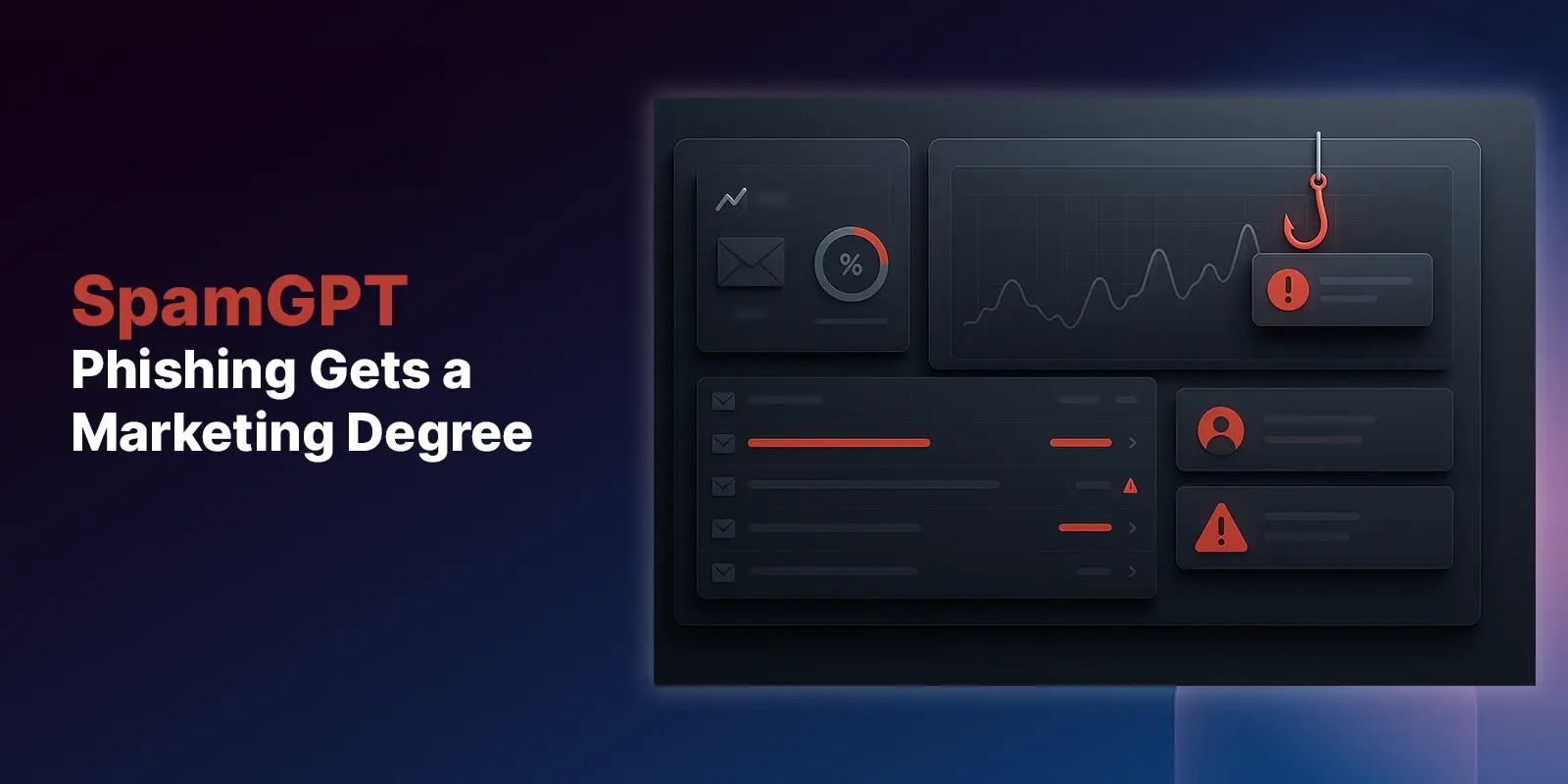Table of Contents
Cybercriminals are getting smarter and more deceptive with their phishing threats. Unfortunately, traditional email security methods can't keep up, often leaving gaps for cybercriminals to exploit. Relying solely on these outdated methods is no longer enough to protect sensitive information.
AI-powered email security offers a more effective solution. Unlike static methods, adaptive AI learns and evolves, offering better protection against emerging threats. AI can detect and neutralize threats in real-time using machine learning and advanced algorithms, adjusting as new tactics appear. This proactive approach is essential for modern organizations to stay ahead of cyber threats.
In this post, we'll explore the evolving landscape of email threats, the limitations of rule-based email security methods, and the role of adaptive AI in email security.
The Evolving Landscape of Email Threats
Traditional Email Security Challenges
Traditional email security methods, such as static filters and signature-based detection, face significant challenges today. These methods often struggle to identify and block new and evolving threats, leaving organizations vulnerable.
One primary issue with traditional email security is its reliance on known threat signatures. Cybercriminals continuously develop new tactics that avoid detection from static security solutions. As a result, many IT leaders face an increasing number of successful phishing attempts and malware infections.
The Rise of Sophisticated Phishing Attacks
Phishing attacks are now more targeted and sophisticated. Traditional email security, which relies on set rules, often misses these advanced threats. Cybercriminals use techniques like spear phishing to make emails look like they come from trusted sources.
Organizations face more advanced attacks, leading to data breaches, financial losses, and reputational damage. The Osterman report, "The Role of AI in Email Security," states that phishing attacks occur more often and are more severe. The report reveals that "the recent emergence of generative AI services, such as ChatGPT and malicious equivalents such as WormGPT, has enabled threat actors to increase the quality of their writing and decrease the easy giveaways of malicious intent."
Limitations of Traditional Email Security Methods
Static Filters and Signature-Based Detection
Traditional email security methods, like static filters and signature-based detection, rely on known threat signatures to detect malicious emails. However, cybercriminals constantly develop new tactics, creating threats that these static methods can't recognize. Zero-day threats or advanced social engineering attacks are prime examples of phishing emails that traditional methods often miss.
Lack of Real-Time Response
Traditional email security lacks real-time response capabilities. When a threat is detected, there is often a delay before action is taken, during which damage can occur. This slow response time can lead to significant security breaches and data loss. Organizations need security solutions that can detect and respond to threats instantly, minimizing potential damage.
Introduction to AI-Powered Email Security Solutions
What is AI-Powered Email Security?
AI-powered email security uses advanced technologies like machine learning and natural language processing to protect against email threats. Unlike traditional methods that rely on static rules and known threat signatures, anti-phishing email security solutions with adaptive AI continuously learn and adapt to new threats.
Machine learning algorithms process large datasets to identify patterns and anomalies that could indicate a threat. Natural language processing helps the system understand and evaluate the content of emails, detecting phishing attempts and other malicious activities that might bypass traditional filters.
How AI Enhances Email Security
AI brings several key benefits to email security. First, it offers real-time threat detection. AI systems can instantly analyze incoming emails and identify potential threats, reducing the time it takes to respond and minimizing the risk of damage.
AI also learns and adapts over time. As it encounters new types of attacks, it updates its algorithms to recognize better and block similar threats in the future. This adaptive learning capability makes AI-powered solutions more effective against evolving threats.
Key Benefits of AI-Powered Email Security Solutions
Improved Detection and Response
AI-powered email security significantly enhances detection and response times for email threats. Traditional methods often struggle to keep up with the speed and sophistication of modern attacks. In contrast, AI systems can analyze and identify threats in real time, allowing organizations to respond immediately.
For example, the Osterman Report "The Role of AI in Email Security" shows that 4 out of 5 organizations using AI-powered solutions saw a dramatic reduction in the time it took to detect and respond to phishing attacks. This quick response helps minimize potential damage and keeps sensitive information secure.
Enhanced User Training and Awareness
AI can also play a crucial role in enhancing user training and awareness. Many successful phishing attacks occur because users are not adequately trained to recognize threats. AI-powered solutions can provide IT leaders with advanced phishing simulations to help users identify and avoid phishing attempts.
Tools like GPT-powered phishing simulation testing uses AI to craft highly personalized spear phishing simulation emails. This personalized approach ensures that users are better equipped to handle potential threats, reducing the overall risk to the organization.
Implementing AI-Powered Email Security in Your Organization
Getting started with AI-powered email security is easier than you might think. Here are three quick steps to begin:
- Assess Your Needs: Evaluate your current email security measures to identify gaps and vulnerabilities. Understanding your specific needs will help you choose the right AI solution.
- Test the Solution: Test the AI-powered email security solution with a small group to see how it performs in your environment. This will help you address any issues before full implementation.
- Roll Out and Train: Once the pilot is successful, implement the solution across your organization and train your IT team to use it effectively. Ensure continuous monitoring and regular updates to maintain optimal security.
To learn more, read the Osterman Report, "The Role of AI in Email Security."
Explore More Articles
Say goodbye to Phishing, BEC, and QR code attacks. Our Adaptive AI automatically learns and evolves to keep your employees safe from email attacks.

/Concentrix%20Case%20Study.webp?width=568&height=326&name=Concentrix%20Case%20Study.webp)













.webp?width=100&height=100&name=PXL_20220517_081122781%20(1).webp)


.png)